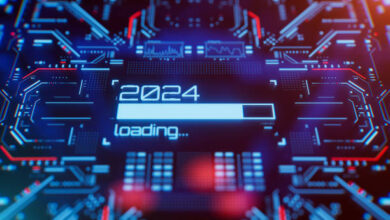Free Government Mobile Phones: Plans, Devices, How to Apply

Most of us cannot imagine operating without a mobile phone. We take it for granted that we can stay in touch with our family and co-workers and access emergency services at the touch of a finger. But for low-income families, phones and mobile phone service are often out of reach because of their high cost.
There is a government program called Lifeline Assistance that partners with several major wireless carriers to provide eligible families with free phones and services.
Thanks to the government’s Lifeline assistance program, you may qualify for free cell phones and low-cost cell phone plans.
For those of you struggling to make your cell phone payment each month, this government program was made for you . Now let’s see if we can set it up with a free government phone. In this article we will explain how you can qualify for the Lifeline program as well as run through companies that offer free cell phones from the government. Lastly, we are going to introduce some low cost cell phone plan alternatives to this free program.
Currently, you can get a free cell phone from the government in about 40 states; The program is being introduced in new states at a rapid pace . If you currently reside in a state where there are no free cell phones, you may still be eligible for a free landline.
Am I entitled to a free government phone with the Lifeline program?
For starters, if you’re already enrolled in a government aid program, you may be automatically eligible for a free government phone . Those who are already enrolled in any of the following programs are eligible:
- Supplemental Nutrition Assistance Program (SNAP)
- Supplemental Security Income (SSI)
- Medicaid
- Federal Public Housing Assistance
- Tribe-Specific Programs: Bureau of Indian Affairs General Assistance, Tribally Administered Temporary Assistance for Needy Families (TTANF),
- Food Distribution Program on Indian Reservations (FDPIR), Head Start
If you or someone in your household participates in one of the above programs, your household may be eligible for a Lifeline assistance discount or FREE services (if provided by a mobile phone company), and perhaps even a free government phone ( depends on the policy of the mobile phone provider).
As in the case of the low income test, participation must also be shown.
This is a list of the information that must be included in a document that serves as proof of participation:
- Your name, or the name of the person who qualifies for the benefit (BQP);
- The name of the program that qualifies for Lifeline, such as SNAP;
- The tribal or government program administrator or managed care organization (MCO) that issued the document; Y
- An issue date within the last 12 months or an expiration date in the future that coincides with the benefit period.
In most cases, a copy of the membership card or a cover letter issued by the program administrators will suffice.
If you are not enrolled in any of these government programs, you will need to show that your income is at or below 135% of the Federal Poverty Guidelines . For example, if you are the only person in your household and you want to get a free phone from the government, you will need to prove that you earn less than $12,760 a year. Each additional person in your household increases the limit by another $4,480, so essentially the more people you have in your household, the easier it is to qualify for a free government cell phone and a cheap cell phone plan.
What are the documents to prove identity
If you want to benefit from Lifeline assistance, you will have to apply based on low income or the participation of one of the household members in government-subsidized programs. In any case, you will have to prove your identity.
This is the complete list of documents that can be used to prove your identity, when applying for Lifeline help:
- Driving license (unexpired)
- Birth certificate
- w-2
- Prior year state, federal, or tribal tax return
- Social Security Card
- naturalization certificate
- US citizenship certificate
- Permanent resident card (unexpired)
- Permanent resident card for foreigners (unexpired)
- Identity document issued by the US government, military, state or tribe (unexpired)
- Passport (not expired)
- Military discharge documentation
- Gun permit (unexpired)
- Government assistance program document (including proof of identity)
- Statement of benefits from a qualified program (including proof of identity)
- Unemployment Benefits or Worker’s Compensation Statement




